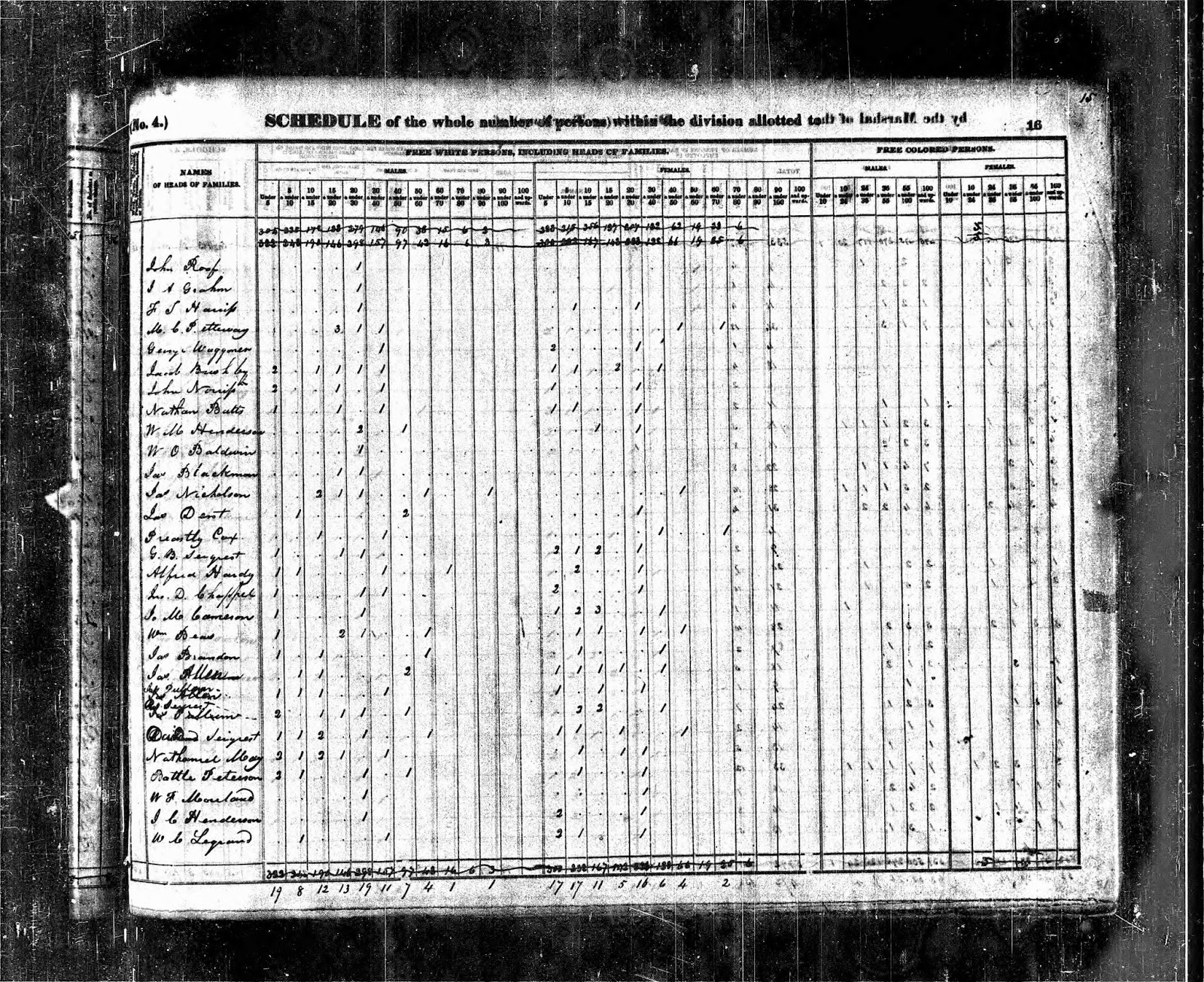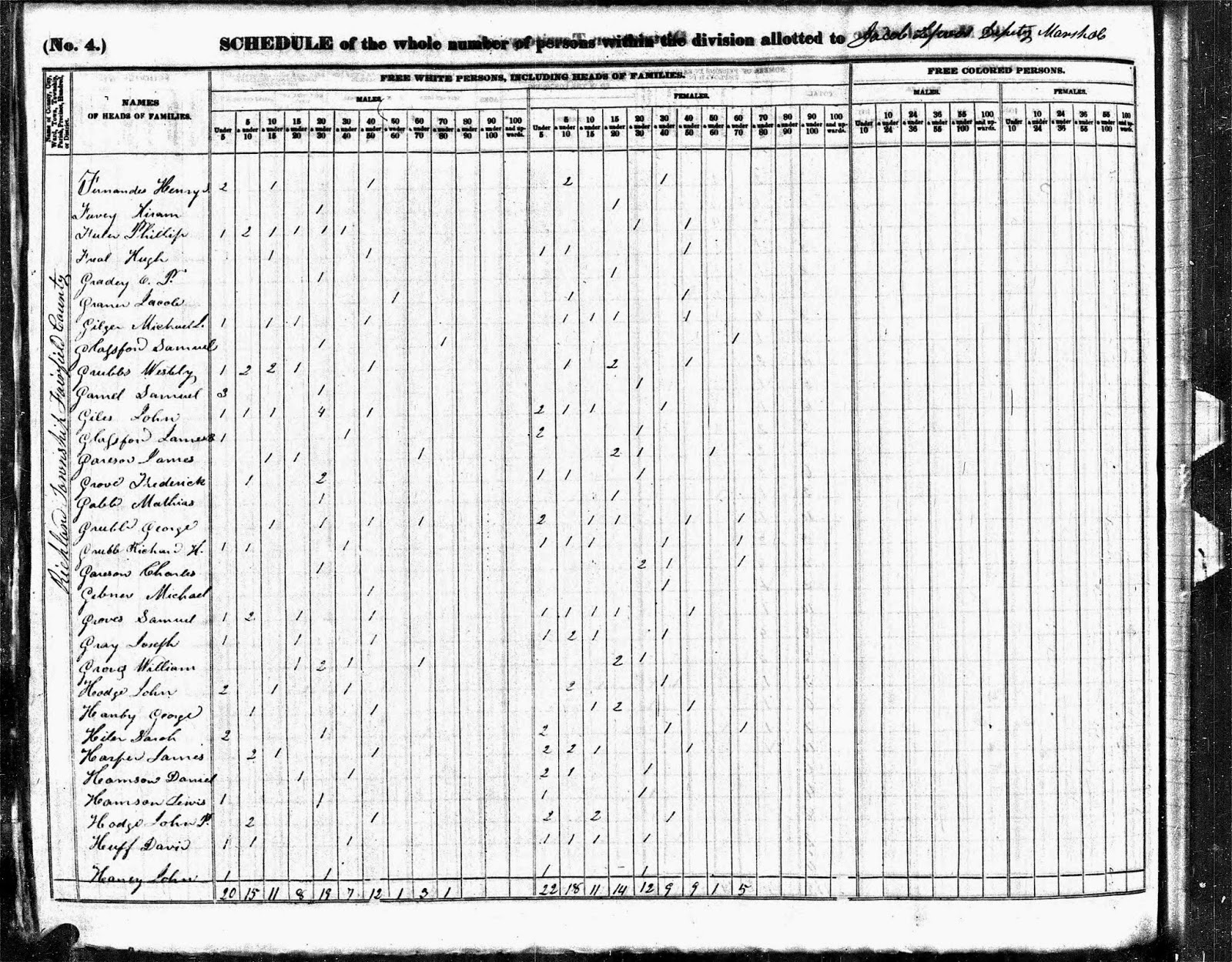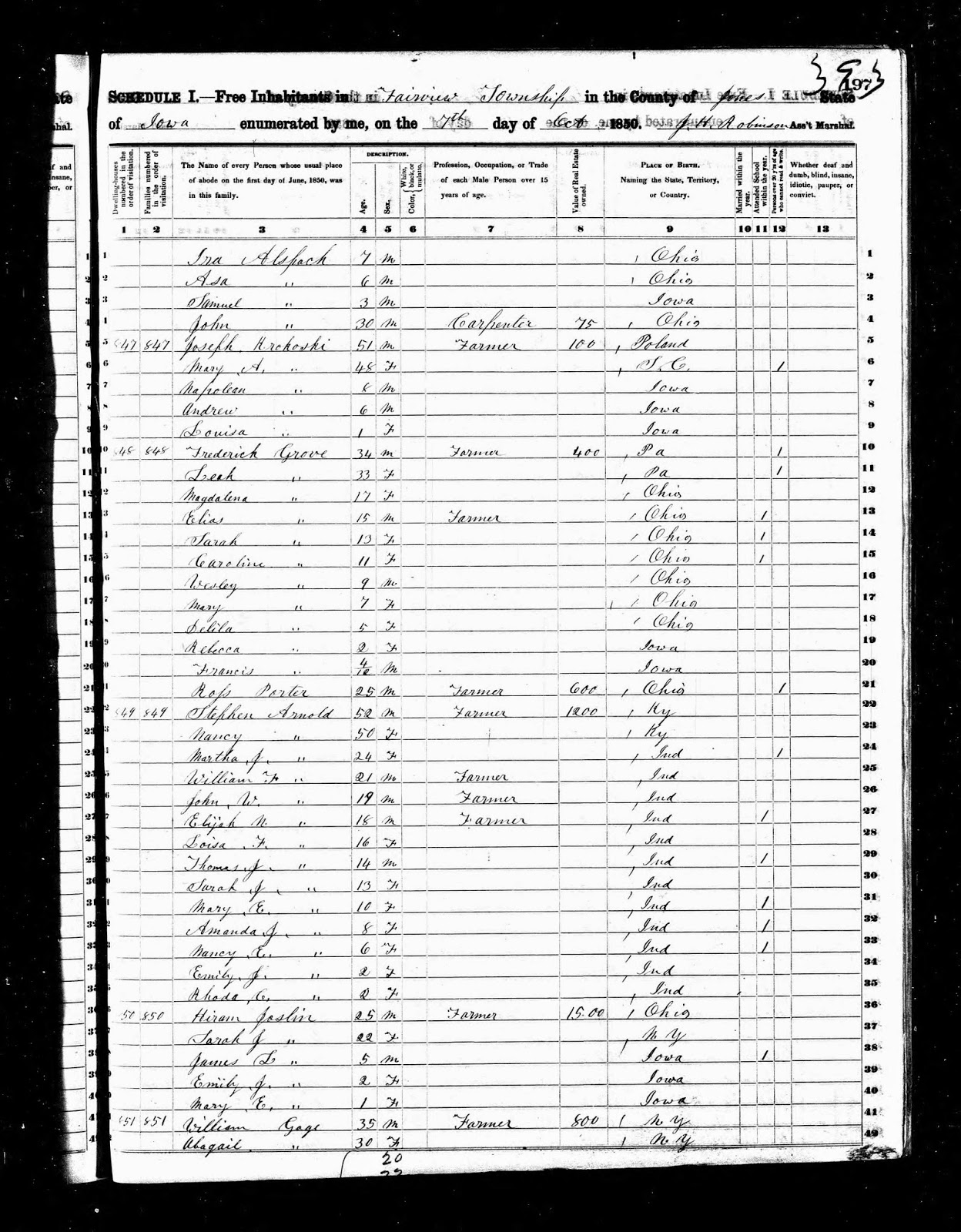This paternal great great great grandmother was named after her mother, Sarah Heath, who married John Chappell in about 1789. Both parents were born in Virginia but were living in Georgia by 1790 and had possibly married there.
In his will, written in 1825 and presented for probate in December of 1828 in Monroe County, John Chappell directed that each of his children should receive $1,000* as an immediate bequest with the remainder, after setting aside property as a life estate for his wife, to be shared equally among their children (or their children's heirs). Sarah, whom we believe to be their youngest child, is the only one of his daughters not married at the time John made his will.
We haven't found a record for the marriage of Sarah H. Chappell and Alfred Ward Hardy, but it most likely occurred in Monroe County, Georgia, about 1830. Their first child was born on January 10, 1831.
The 1834 Georgia Property Tax Digest lists Alfred Hardy's family living on 100 acres in Monroe County** next door to his widowed mother-in-law. There are other Heaths and Chappells living nearby.
[Ancestry.com. Georgia, Property Tax Digests, 1793-1892 [database on-line]. Provo, UT, USA: Ancestry.com Operations, Inc., 2011. Original data: Georgia Tax Digests [1890]. 140 volumes. Morrow, Georgia: Georgia Archives.]
We know that Sarah's mother died in 1837 and sometime, probably in the next year, Alfred, Sarah and family moved to Cotton Valley in Macon County, Alabama, where they are found in the 1840 U.S. Census. Of the 20 people in his household, 13 are slaves. My great great grandmother
Martha Heath Hardy (born in 1834) is enumerated as one of the two "Free White Persons - Females - 5 thru 9" in the family. A Chappell relative is living next door.
[Ancestry.com. 1840 United States Federal Census [database on-line]. Provo, UT, USA: Ancestry.com Operations, Inc., 2010. Images reproduced by FamilySearch. Original data: Sixth Census of the United States, 1840. (NARA microfilm publication M704, 580 rolls). Records of the Bureau of the Census, Record Group 29. National Archives, Washington, D.C.]
With the 1850 U.S. Census, we finally have a record that lists Sarah by name. Alfred is shown as head of household when the count was taken on November 21, 1850, but his name shouldn't have been there as we know that he died on May 26th and the Census Instructions clearly stated that everyone should be enumerated as of June 1st of that year. I don't know if the census taker wasn't following his instructions or whether Sarah or another family member chose to include Alfred. My great great grandmother had already left home as the bride of J.T.S. Warren.
[Ancestry.com. 1850 United States Federal Census [database on-line]. Provo, UT, USA: Ancestry.com Operations, Inc., 2009. Images reproduced by FamilySearch. Original data: Seventh Census of the United States, 1850; (National Archives Microfilm Publication M432, 1009 rolls); Records of the Bureau of the Census, Record Group 29; National Archives, Washington, D.C.]
It's possible that Sarah left Alabama for Cass County, Texas, as early as 1852 when J.T.S. and Martha Warren moved there, but she certainly was a property owner in that county by 1855 when the tax roll showed her owning 380 acres and 17 slaves.
["Texas, County Tax Rolls, 1846-1910," index and images, FamilySearch (https://familysearch.org/pal:/MM9.3.1/TH-1-13728-39795-24?cc=1827575 : accessed 24 February 2015), Cass county > 1855 > image 13 of 37; State Archives, Austin.]
From the 1860 U.S. Census, we see that Sarah, whose only child left at home is her youngest daughter 17-year old Sarah Elizabeth, had prospered as a widow. She is listed as owning real estate valued at $2,500 and personal property*** worth $11,935. There are lots of Heaths, Hardys and Chappells in the neighborhood.
[Ancestry.com. 1860 United States Federal Census [database on-line]. Provo, UT, USA: Ancestry.com Operations, Inc., 2009. Images reproduced by FamilySearch. Original data: 1860 U.S. census, population schedule. NARA microfilm publication M653, 1,438 rolls. Washington, D.C.: National Archives and Records Administration, n.d.]
[Ancestry.com. 1860 U.S. Federal Census - Slave Schedules [database on-line]. Provo, UT, USA: Ancestry.com Operations Inc, 2010. Original data: United States of America, Bureau of the Census. Eighth Census of the United States, 1860. Washington, D.C.: National Archives and Records Administration, 1860. M653, 1,438 rolls.]
County Tax Records**** show that by 1864 Mrs Sarah Hardy owned 16 slaves worth $8,000 and 500 acres of land. But that was all about to change.
["Texas, County Tax Rolls, 1846-1910," index and images, FamilySearch (https://familysearch.org/pal:/MM9.3.1/TH-1-13728-36953-32?cc=1827575 : accessed 31 Jul 2014), Davis county - 1864 - image 12 of 31; citing State Archives, Austin.]
In the 1870 U.S. Census we see that Sarah, who had her oldest daughter Ann Elizabeth's orphan children living with her, still owned 500 acres of land but now, after emancipation, only $100 of personal property. Family members, including my great great grandparents, J.T.S. Warren and his wife, her daughter Martha, live near her.
[Ancestry.com. 1870 United States Federal Census [database on-line]. Provo, UT, USA: Ancestry.com Operations, Inc., 2009. Images reproduced by FamilySearch. Original data: 1870 U.S. census, population schedules. NARA microfilm publication M593, 1,761 rolls. Washington, D.C.: National Archives and Records Administration, n.d.Minnesota census schedules for 1870. NARA microfilm publication T132, 13 rolls. Washington, D.C.: ]
The 1876 County Tax Rolls hold the last listing for Mrs. Sarah Hardy in her own right.
["Texas, County Tax Rolls, 1846-1910," index and images, FamilySearch ( https://familysearch.org/pal:/MM9.3.1/TH-1-13728-31651-7?cc=1827575 : accessed 31 Jul 2014), Cass county - 1876 - image 47 of 94; citing State Archives, Austin.]
For the next two years the tax entry for her 500 acres is listed as "Hardy Sarah H By J.T.S. Warren" so we presume that she died about 1876 and her son-in-law administered her estate during probate.
*Although each child was left $1,000, the final sum they were to receive from this part of his will was subject to an "understanding and limitation" whereby those to whom he had advanced money before his death would have that debt subtracted from their $1,000. This allowed the division of his estate to be more equitable.
**The first column in the Tax list shows the number of slaves owned by that person. Alfred owned 12 slaves and his wife's mother had 4.
***Almost all of this amount would represent the 17 slaves she owned. In the Slave Schedule shown above, her surname is misspelled as Hasty.
****From 1861 to 1871
Cass County was known as Davis County in honor of Jefferson Davis, the President of the Confederate States.
© 2015 Copyright, Christine Manczuk, All Rights Reserved.













.jpg)


































